
The Bánh Mì sandwich is likely the most famous of all Vietnamese exports and rightfully so. A pint-sized baguette is split lengthwise and filled with all kinds of savory ingredients. You can find banh mis with all kinds of meat fillings but common to almost all banh mis are cilantro leaves, cucumbers, pickled carrots and daikon. The banh mi, which confusingly refers to both baguette and sandwich, is first slathered in spicy mayonnaise and then filled. When I was in Vietnam last winter, I couldn’t get enough of them, something that is surprisingly easy. There are literally Banh Mi food stands everywhere in the country. And the the sandwich generally costs the equivalent of one American dollar. The one I particularly liked was the chicken variation. My, it was good! It’s easy to understand the Banh Mi’s enormous popularity. And when I came across this recipe, I couldn’t wait to make it.
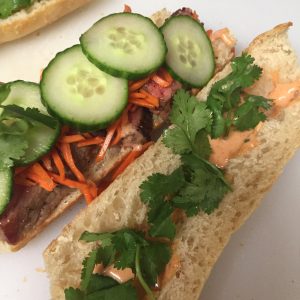
The bread “Banh Mi” came with the arrival of the French and the absorption of Vietnam into French Indochine. By 1860, the small baguette had become a feature of Vietnamese life. Because the wheat flour to make them had to be imported, they were first considered a luxury. Gradually, Vietnamese bakers began mixing in local, and therefore inexpensive, rice flour. It became a food ordinary Vietnamese could afford. At first, baguettes were mainly eaten for breakfast with butter and sugar. The first savory banh mis hewed to French palates: Jambon-beurre, the classic French Ham and Butter combination was moistened with mayonnaise or spread with liver pate. The varieties of banh mis really took off after 1954 when Vietnam was partitioned into North and South. A million migrants left the north for the south and Saigon, South Vietnam’s capital, became a hotbed of banh mi flavors.
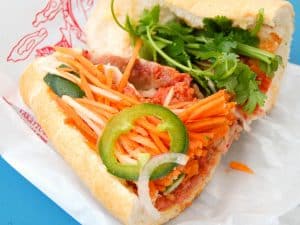
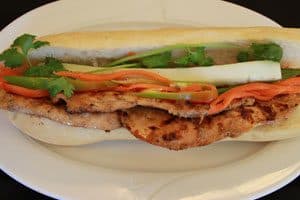
The vegetable mixture remained the same—cilantro, carrots, daikon and cucumber—exactly what I used to make our Steak Banh Mi. But the fillings were a panoply of local proteins. Steamed, pan-roasted or oven-roasted and seasoned pork belly, Vietnamese sausage, grilled pork, grilled pork patties, spreadable pork liver pate, grilled chicken, sardines in tomato sauce, soft pork meatballs in tomato sauce, head cheese, duck and tofu all competed for Vietnamese taste buds. After the fall of Saigon, the Banh mi spread outside of the country, most specifically by Vietnamese refugees who came to cities across the United States. It started in California but soon spread eastward. Sometimes it was made more familiar to locals with versions like New Orleans’ ‘Vietnamese Po’ Boy which won a 2009 Award for best Po’Boy at the annual Oak Street Po-Boy Festival. Similarly, there’s a restaurant in Philadelphia that sells another hybrid: a Vietnamese Hoagie.
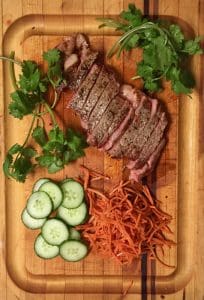 That brings us to today’s recipe. Of note is the fact that there’s not one mention of beef being used as a Banh Mi ingredient in Vietnam. Beef makes up 23 percent of the world’s meat consumption whereas in current day Vietnam, it’s 7 percent of what’s eaten. Pork is by far the most popular meat there. All high-quality beef is imported into Vietnam, the local stuff being of questionable hygiene. So we have to conclude that today’s recipe, like the Po’ Boy and the Hoagie has an American accent. I would like to point out, aside from the steak, the basic ingredients are pure takes on the Vietnamese. It’s a very easy recipe to make and requires very little time. Even the pickling of the carrots takes just 15 minutes. And the only cooking here is the steak itself which might take all of 6 to 8 minutes or until the meat reaches an internal temperature of 125 degrees for medium rare. A full-sized baguette can become a banh mi just by cutting into 7 to 9 inch pieces, then splitting it down the middle. (You can find single-serving baguette at Trader Joe’s but don’t despair, the full sized baguette will do just fine.) And if you’d like to read more about my food adventures in Vietnam and my Silversea Cruise experience there, there’s a link to that story right after the recipe. Here is the recipe:
That brings us to today’s recipe. Of note is the fact that there’s not one mention of beef being used as a Banh Mi ingredient in Vietnam. Beef makes up 23 percent of the world’s meat consumption whereas in current day Vietnam, it’s 7 percent of what’s eaten. Pork is by far the most popular meat there. All high-quality beef is imported into Vietnam, the local stuff being of questionable hygiene. So we have to conclude that today’s recipe, like the Po’ Boy and the Hoagie has an American accent. I would like to point out, aside from the steak, the basic ingredients are pure takes on the Vietnamese. It’s a very easy recipe to make and requires very little time. Even the pickling of the carrots takes just 15 minutes. And the only cooking here is the steak itself which might take all of 6 to 8 minutes or until the meat reaches an internal temperature of 125 degrees for medium rare. A full-sized baguette can become a banh mi just by cutting into 7 to 9 inch pieces, then splitting it down the middle. (You can find single-serving baguette at Trader Joe’s but don’t despair, the full sized baguette will do just fine.) And if you’d like to read more about my food adventures in Vietnam and my Silversea Cruise experience there, there’s a link to that story right after the recipe. Here is the recipe:
Steak Banh Mi
The vegetables are all authentic Vietnamese ingredients, the steak may be America's gift to the Banh Mi

Ingredients
- ¾ cup White Vinegar
- ¼ cup White Sugar
- Kosher Salt and Ground Black Pepper
- 2 medium carrots, peeled and shredded or julienned.
- 1 lb. Skirt Steak—I used a boneless New York Strip steak
- 1/3 cup Mayonnaise
- 3 tablespoons Sriracha
- 4 7-8 inch French baguettes or 1 long baguette cut into 7-8 inch sections
- ½ English Cucumber
- 1 Cup Cilantro Sprigs
Directions
- Step 1 In a medium bowl, stir together the vinegar, sugar, and 1 tsp. salt. Stir in the carrots and set aside.
- Step 2 Heat the broiler to high positioning one rack four inches from the heat source. Line and rimmed baking sheet with foil.
- Step 3 Season the steak on both sides with 2 tsp. kosher salt and 1 tsp. pepper. Place in an even layer on the prepared baking sheet and let stand at room temperature for 15 minutes. Meanwhile, in a small bowl, stir together the mayonnaise and Sriracha. Set aside.
- Step 4 Pull out some of the interior crumb of each piece of bread, the remaining crust and crumb should be about ¾ inch thick. Set aside
- Step 5 Broil the steak until the center reaches 125 degrees for medium rare, 130 for medium, 3 to five minutes, flipping once halfway through. Turn off the broiler, transfer the steak to a plate, and tent with foil. Let rest for 10 minutes.
- Step 6 Meanwhile, arrange the bread halves cut sides down on the now-empty baking sheet. It’s fine if they overlap a bit. Place in the oven on the middle rack and heat until the bread is warm, about 5 minutes. Strain the carrots.
- Step 7 Spread the cut sides of the bread evenly with the mayonnaise. Cut the steak against the grain on the bias into thin slices. Taste and season with salt and pepper.
- Step 8 Evenly divide the steak and any accumulated juices among the bottom halves of the bread, then top with the carrots, cucumber slices and cilantro. Top with the remaining bread. Serve.
Here’s an account of my Cooking Adventures in Vietnam aboard Silversea’s Silver Shadow…
My Travels: My Vietnamese Culinary Journey has just been published…
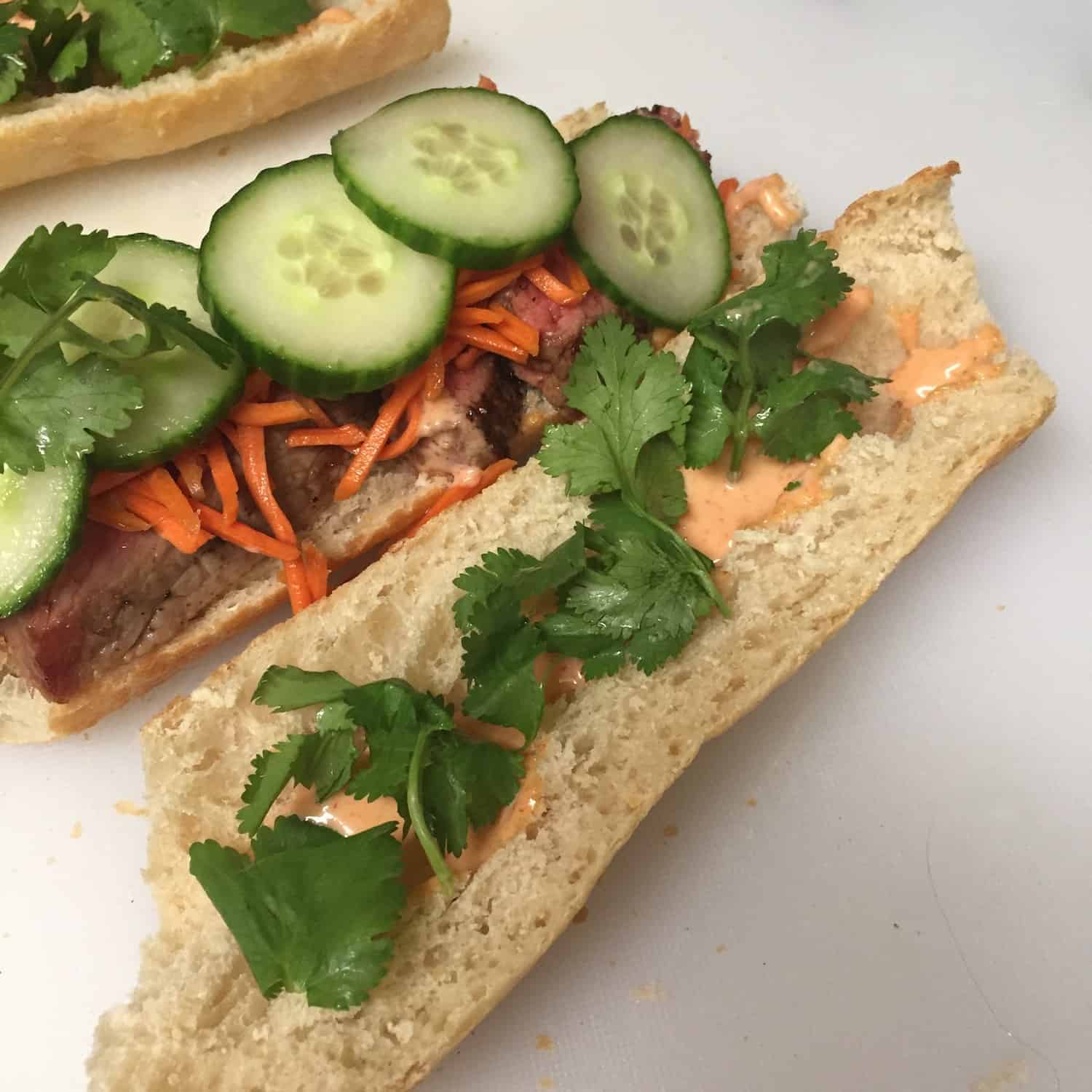
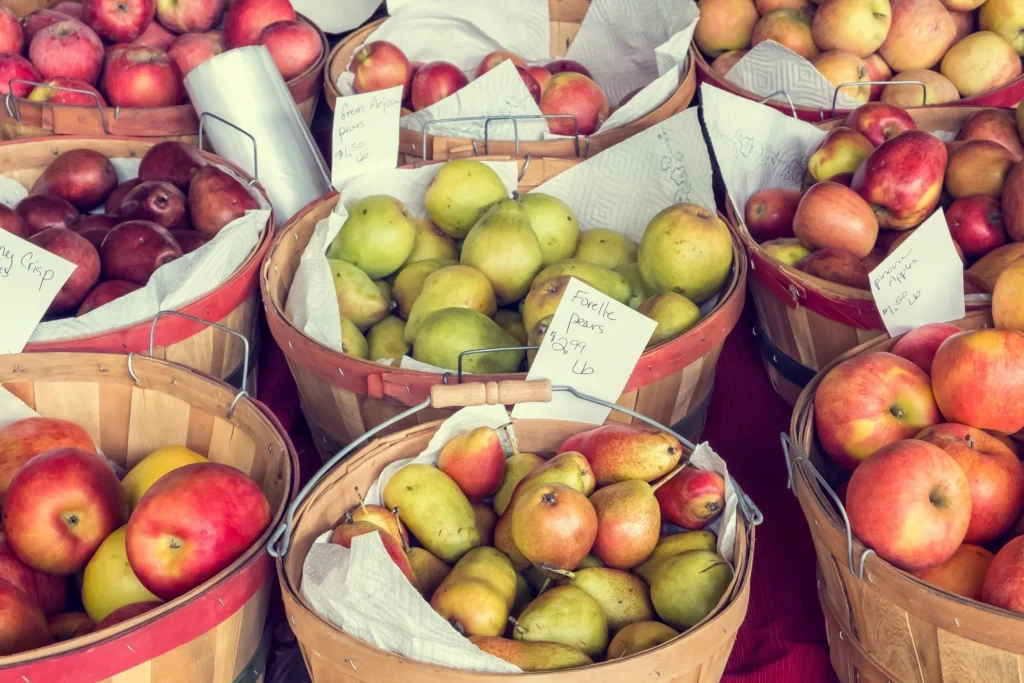
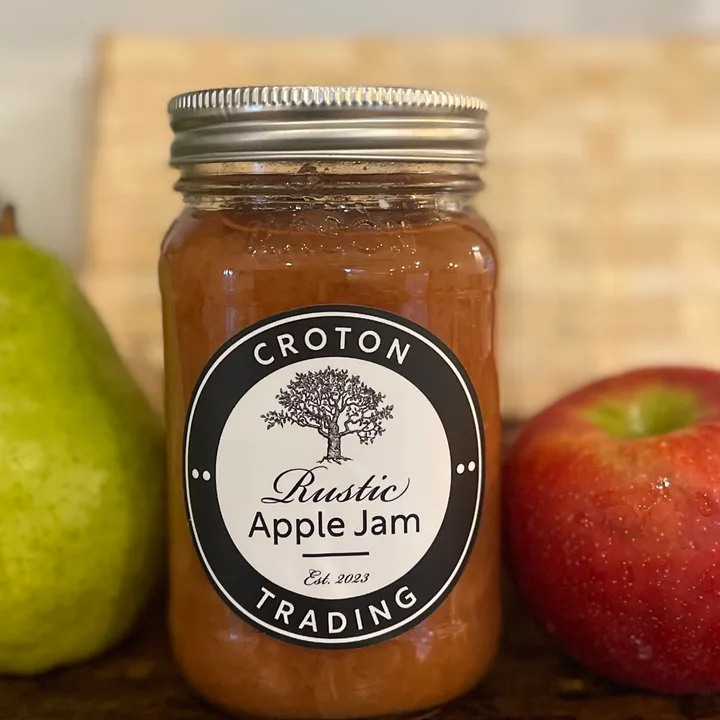
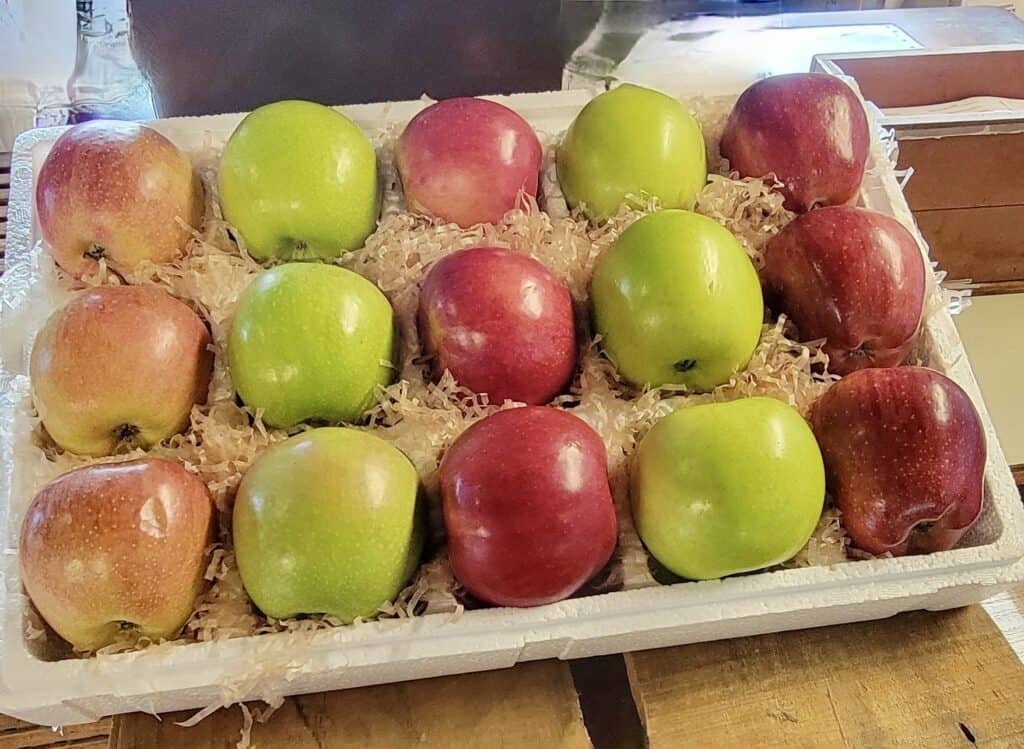
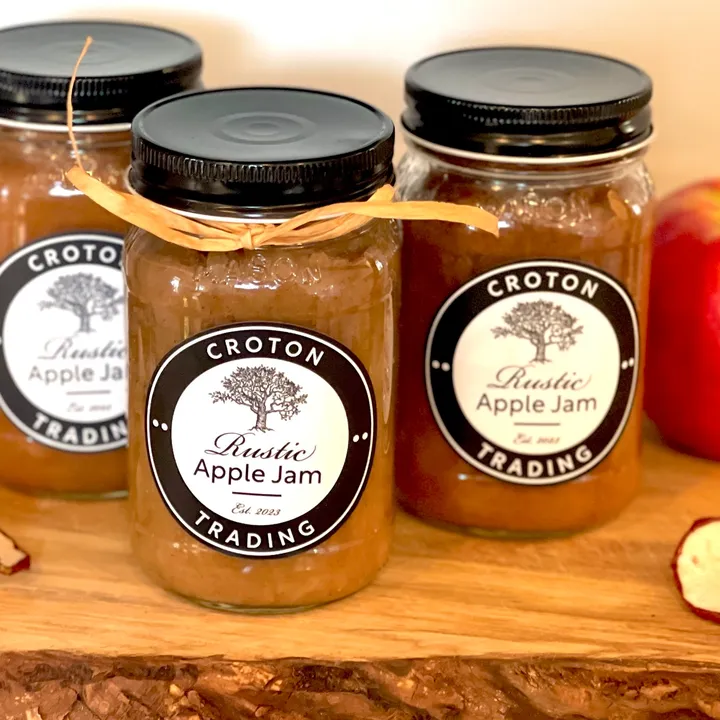
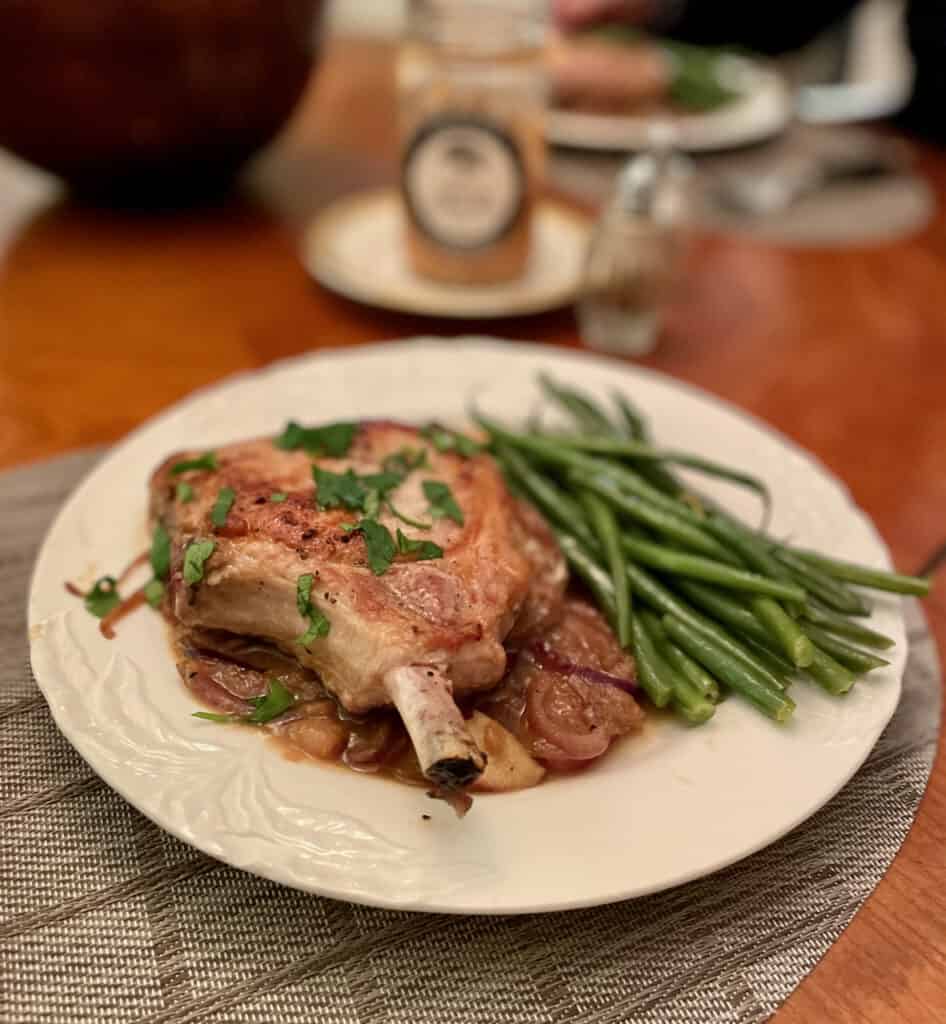






I love Banh Mi ! I made your other recipe (Melissa Clark’s), which was delish! I can’t wait to try this one.
Thanks for your ongoing stellar blog and recipes!
Kate from Alberta
Thanks so much Kate! This one is a keeper too!